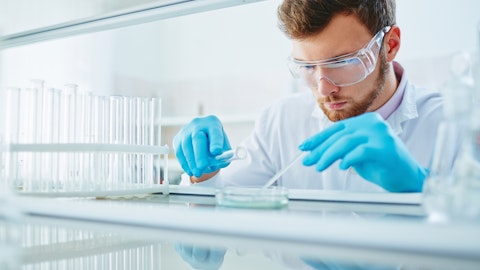In this piece, we will take a look at the twenty cities with the highest depression rates in the U.S. For more cities, head on over to 5 Cities with the Highest Depression Rates in the U.S.
The devastating effects of depression cause suffering to countless families each year and also lead to staggering economic losses. For instance, according to research published in PharmacoEconomics, the economic burden of adults suffering from major depressive disorder (MDD), which is one of the several kinds of depression, stood at a whopping $362 billion in 2020. This marked a massive 37.9% growth from 2010 values, and the growth indicates that unless effective depression treatments are developed, the costs of the mental health disease will only rise. Delving deeper into the costs, researchers reveal that this economic burden consists of direct costs, suicide related costs, and workplace costs. The workplace costs make up the biggest component as they account for 73% of the total.
Researchers in China have an interesting study on this topic. Typically, it’s thought that as the economy falters, rates of mental health disturbances and depression go up in society. Assuming this to be true, it’s only natural to assume that the reverse is also true i.e. as the economy grows, mental health should also improve. Well, as is the case with most things, the inverse relationship isn’t really that simple. The researchers used data from the China Health and Retirement Longitudinal Study (CHARLS) of people 45 years or older, and assessed them for several indicators of mental health. They concluded that higher growth rates of gross domestic product (GDP per capita) led to higher scores in depression, life impairment, and cognitive dissatisfaction. Food for thought, huh?
It’s clear that whether the economy is good or bad, depression’s here to stay. Naturally, this opens up a large market to develop and sell treatments. On this front, the research firm Emergen Research believes that the global anxiety and depression market was worth $12.06 billion in 2019 and is set to grow at a compounded annual growth rate (CAGR) of 2.9% from then until 2027 to be worth $16 billion as 2027 ends. There are several treatments available for depression, which include medications such as antidepressants, behavioral therapy such as cognitive behavioral therapy, and stimulative methods such as Electroconvulsive therapy (ECT).
Believe it or not, the ECT market is one of the fastest growing treatments for depression – perhaps because it is also one of the smallest. According to Precedence Research, the global shockwave market was worth $1.2 billion in 2021 and will more than double by 2030 by growing at 11.2% and sitting at $3.1 billion. Of course, this market is also made of non mental health treatments such as sports injuries. However, depression has the potential to ‘stimulate’ the market as well, as several reports such as those from the Korean Psychiatric Association outline that ECT sees a response rate in up to 90% of MDD cases.

Photo by Jonathan Rados on Unsplash
Moving forward to new treatments, particularly pharmacological ones, for depression, two such drugs are the first to secure approval from the Federal Drug Administration (FDA) in decades. The first of these is esketamine, approved in 2019, and the second is Dextromethorphan/bupropion, which was approved just last year. The former is sold by a subsidiary of Johnson & Johnson (NYSE:JNJ), and is marketed as Spravato, and the second is marketed by Axsome Therapeutics, Inc. (NASDAQ:AXSM) as Auvelity.
Since it is a freshly launched drug, Johnson & Johnson cannot yet specifically provide figures for Spravato’s sales. However, during its latest earnings call for the results for the fourth quarter of 2022, the firm shared that the drug will be part of its future growth. During the event, the company’s management outlined:
We expect to again deliver above-market growth in 2023, driven by key assets such as DARZALEX, ERLEADA, TREMFYA, GA SUSTENNA and UPTRAVI as well as continued uptake of recently launched products, such as CARVYKTI, SPRAVATO and TECVAYLI. This growth is despite lower Pharmaceutical market growth than experienced in recent years and considers the STELARA loss of exclusivity, which we anticipate occurring in late 2023 in the U.S. While we continue to expect volume growth for STELARA in the U.S. up to the LOE date, we expect this growth to be offset by pricing pressure. Further, we continue to expect a 2023 impact from other post-LOE products as well as potential increased austerity measures across Europe.
Biogen Inc. (NASDAQ:BIIB) and Sage Therapeutics, Inc. (NASDAQ:SAGE) are developing a treatment called zuranolone which might be needed to be used for as little as two weeks. Sage’s management shared details about this drug in an earnings call as it shared:
Starting with our depression franchise. We recently shared new analyses and additional data from the zuranolone clinical development program at the 2022 site Congress and the 35th European College of Neuropsychopharmacology, or ECMP Congress. These presentations included data from the SHORELINE Study, and health economics and outcomes research, as well as the presentation of data from the SKYLARK Study. The analyses and data presented continue to build on the positive data we’ve shared earlier in the year. I want to highlight a few of the key themes that support the potential for zuranolone. First, the analyses highlight the rapidity of onset of zuranolone seen in patients with both MDD and PPD in our clinical trials.
In particular, results from the WATERFALL Study showed a treatment effect compared placebo, as early as day three in zuranolone 50 milligrams. Additionally, a post hoc analysis of MDD patients from the study to get the improvements with zuranolone 50 milligrams compared to placebo, or clinically meaningful. Further in the SKYLARK Study, patients with PPD treated with zuranolone 50 milligrams experienced rapid, clinically meaningful and statistically significant improvements in depressive symptoms as early as day three that were sustained through day 45. In both studies, the results were clinically meaningful across the early time periods, further reinforcing our belief in the rapid acting nature of zuranolone in-patients with both MDD and PPD.
With these details in mind, let’s take a look at some U.S. cities with the highest depression rates.
Our Methodology
To compile our list of America’s most depressed cities, we used data from CEUfast, a nursing education provider operating for decades with accredited courses. Their data covers the percentage of the population of metropolitan areas with depression, with fifty total entries. Out of these, the top twenty cities with the highest depression in the U.S. are listed below.
Don’t Miss: 25 States that have the Highest Rates of Depression in America.
Cities with the Highest Depression Rates in the U.S.
20. Logan, Utah
Percentage of Residents With Depression: 24.10%
Logan is a city in Utah and one of the smaller ones with a population of just over 50,000 people. It houses the Utah State University.
19. Toledo, Ohio
Percentage of Residents With Depression: 24.40%
Toledo is one of the largest cities in Ohio, with a population that is close to three hundred thousand people.
18. Baton Rouge, Louisiana
Percentage of Residents With Depression: 24.40%
Baton Rouge is the capital of Louisiana and is known for its vibrant economy made of tech, manufacturing, and oil firms.
17. Portland Metropolitan area
Percentage of Residents With Depression: 24.50%
The Portland metropolitan area, or Portland-Vancouver-Hillsboro, OR-WA has a population of 2.5 million people and is centered in Portland, Oregon.
16. Springfield, Massachusetts
Percentage of Residents With Depression: 24.50%
Springfield is one of the largest cities in Massachusetts with a population of more than 150,000 people.
15. Northwest Arkansas
Percentage of Residents With Depression: 24.80%
Northwest Arkansas is a metropolitan area in Arkansas with more than half a million people.
14. Boise, Idaho
Percentage of Residents With Depression: 24.90%
Boise is the capital city of Idaho and houses almost a quarter of a million people.
13. Central Rock, Arkansas
Percentage of Residents With Depression: 25.00%
Central Rock is the largest metropolitan area in Arkansas in terms of population.
12. Organ-Clearfield Metropolitan Area
Percentage of Residents With Depression: 25.40%
Ogden-Clearfield metropolitan area is made up of four counties in Utah.
11. Lafayette, Louisiana
Percentage of Residents With Depression: 25.60%
Lafayette is a city in Louisiana with the presence of several large and important companies.
10. Duluth, Minnesota
Percentage of Residents With Depression: 25.80%
Duluth is a port city in Minnesota with a large presence of engineering firms.
9. Chattanooga, Tennessee
Percentage of Residents With Depression: 25.80%
Chattanooga is one of the largest cities in North Tennessee and houses important firms such as Amazon and DuPont.
8. Salem, Oregon
Percentage of Residents With Depression: 25.90%
Salem is the capital of Oregon, with the state government being its largest employer.
7. Madison, Wisconsin
Percentage of Residents With Depression: 26.90%
Madison is the capital city of Wisconsin with a vibrant economy made of financial and energy firms.
6. Spokane Valley, Washington
Percentage of Residents With Depression: 27.20%
Spokane Valley is a city in Washington and one of the largest in the state.
Click to continue reading and see 5 Cities with the Highest Depression Rates in the U.S.
Suggested Articles:
- 10 Best Stocks To Invest In 2023 For Beginners
- 10 Best Car Stocks To Buy Now
- 11 Best Diversified Stocks to Buy Now
Disclosure: None. 20 Cities with the Highest Depression Rates in the U.S. is originally published on Insider Monkey.





